

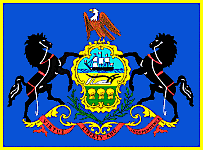 In my state, Pennsylvania, homeschoolers are required to learn Pennsylvania State History. I had a request to add a course on Pennsylvania History because none of the resources available provide a Catholic-based history of the state. So I decided to add that for next year, even though this would probably be of less interest to people in other states or other countries.
In my state, Pennsylvania, homeschoolers are required to learn Pennsylvania State History. I had a request to add a course on Pennsylvania History because none of the resources available provide a Catholic-based history of the state. So I decided to add that for next year, even though this would probably be of less interest to people in other states or other countries.
No other materials are required, though a map of Pennsylvania would be helpful.
Lessons planned so far for this course (still subject to change):
| 1 | Indians | 12 | Coal & Steel | 23 | St. Katherine Drexel |
| 2 | First Settlers | 13 | Diocese of Pittsburgh | 24 | Johnstown Flood |
| 3 | Quakers | 14 | Know-Nothings | 25 | Diocese of Altoona-Johnstown |
| 4 | William Penn | 15 | St. John Neumann | 26 | Pennsylvania Turnpike |
| 5 | After William Penn | 16 | Diocese of Erie | 27 | ENIAC |
| 6 | Colonists | 17 | President Buchanan | 28 | Declining Industry |
| 7 | Pennsylvania Dutch & Amish | 18 | Civil War | 29 | Diocese of Greensburg |
| 8 | Revolutionary War | 19 | Gettysburg | 30 | Diocese of Allentown |
| 9 | Diocese of Philadelphia | 20 | Diocese of Harrisburg | 31 | Bicentennial & Eucharistic Conference |
| 10 | Early USA | 21 | Diocese of Scranton | 32 | Homeschooling in Pennsylvania |
| 11 | Railroads | 22 | Centennial |
![]()

This poetry course deals with scansion (finding the metric rhythm of verses of poetry). Rhythm is just as important to poetry as it is to music or dance. It is necessary to have a sense of rhythm in order to read poetry correctly, and to appreciate it, just as a person cannot play music without rhythm.
Some people have a natural feel for poetic rhythm. But even then, it's helpful to have an understanding of it, in case they run across something that doesn't scan easily. And if a person doesn't have a natural sense of poetic rhythm, it's something that's not too hard to learn!
There are a lot of difficult, Greek-based technical terms in scansion. This course will keep that to a minimum, and there will be plenty of audio so pronouncing the terms should not be a problem.
Poetry in other languages is often very different from English. The course will end with looking at how poetry works in some other languages. It is not necessary to know any Latin or the Hebrew alphabet when we get to lessons on poetry in those languages (though students will obviously get more out of those lessons if they've already taken the Latin or Hebrew Alphabet classes here).
This are a couple example of how much of a difference rhythm makes:
|
An example of poetry read without rhythm: |
Another example of poetry read without rhythm: The same thing read with the proper rhythm: |
The only requirement for this course is that the student must know how to divide words into syllables, and be able to find the accent.
Lessons in this course:
| 1 | Accents | 5 | Ballad Meter | 9 | Hebrew Verse |
| 2 | Feet | 6 | 5 Beats: Pentameter | 10 | Other Languages |
| 3 | Dimeter & Trimeter | 7 | Other Meters | ||
| 4 | 4 Beats: Tetrameter | 8 | Latin Verse |
![]()

This class fills in the gap between the Ancient History & Bible History courses, and the Medieval History course.
This was a time of some of the greatest heroes and villains of all time. There were truly great men like Pope Leo the Great, 'Santa Claus', and Constantine, and men of incredible evil, like Nero, Julian the Apostate, and Arius.
Most of the course concentrates on the history of the Church in the years between Apostolic Times and the Middle Ages, but also includes a lot about the barbarian conquest of the Roman Empire before the Middle Ages. That's why the title of the course is the history of the Early Church and Dark Ages.
Lessons in this course:
| 1 | Apostolic Times | 12 | Successors of Constantine; Julian the Apostate | 23 | Other Barbarians |
| 2 | First Popes | 13 | St. Nicholas | 24 | St. Leo the Great |
| 3 | The Mass | 14 | Council of Constantinople | 25 | St. Augustine & St. Jerome |
| 4 | Fall of Jerusalem | 15 | St. Augustine & St. Jerome | 26 | Ireland |
| 5 | Pagans | 16 | St. Patrick | 27 | Asia |
| 6 | Gnostics | 17 | Barbarians | 28 | Council of Chalcedon |
| 7 | Roman Renaissance persecutions | 18 | Franks | 29 | Fall of Rome |
| 8 | Asceticism & Anchorites | 19 | Goths | 30 | Clovis |
| 9 | Catecombs | 20 | Huns | 31 | St. Benedict |
| 10 | Constantine & Edict of Milan | 21 | Vandals | 32 | The End of the Dark Ages |
| 11 | Arian Heresy & St. Athanasius | 22 | Britons |
![]()
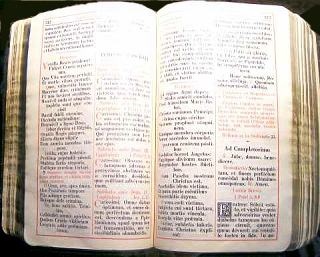
This course teaches how Compline, the official liturgical Night Prayers of the Church, are said or sung.
It is best to do this course after having completed the Latin course here! Compline is in Latin. All the prayers are fully explained and translated, so it is possible to do this course without completing the Latin course first. However, there will be parts that may not be clear without some knowledge of the Latin language.
Compline here is according to the 1962 rubrics for the Roman Rite. But there is also some mention of the Benedictine form of Compline, which is somewhat different in parts.
Lessons in this course:
| 1 | What is Compline | 5 | Psalms - Thursday,Friday,Saturday | 9 | Marian Anthems |
| 2 | The Beginning Prayers | 6 | Hymn | 10 | Variants |
| 3 | Psalms - Sunday | 7 | Gospel Canticle | ||
| 4 | Psalms - Monday,Tuesday,Wednesday | 8 | Marian Anthems |
![]()
LOGIC
This is a simple course on the Logic of Aristotle, which was also used by St. Thomas Aquinas. The first half of the year will be on formal logic, and the second half of the year on informal logic. Logic is a very difficult subject, but this course will be simple enough for young people. There will be Latin words and phrases, but no knowledge of Latin is needed because they will all be explained. There will be a good amount of humor in the course, as well as examples of how people can arrive at wrong ideas in religion (such as superstitions) because of bad logic. |
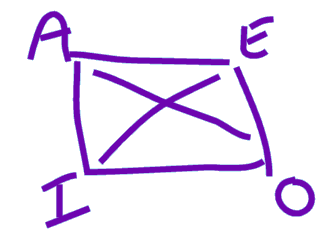 |
Lessons in this course:
| 1 | What is logic? | 12 | obversion | 23 | Non Sequitur (doesn't follow): Ignoratio Elenchi |
| 2 | the syllogism | 13 | contraposition | 24 | Non Sequitur (doesn't follow): Straw Man |
| 3 | all+all | 14 | paradox | 25 | ad misericordiam (to mercy) |
| 4 | all+none | 15 | definitions | 26 | ad ignorantiam (to ignorance) |
| 5 | some+all | 16 | computer logic | 27 | Circulus in demonstrando (circular) |
| 6 | some+none | 17 | informal (material) fallacies | 28 | Dicto simpliciter (said simply) |
| 7 | invalid | 18 | ad Hominem (to the man) | 29 | ad antiquitatem (to antiquity) |
| 8 | the undistributed middle | 19 | ad Verecundiam (to respect) | 30 | Non Causa Pro Causa (not cause for cause) |
| 9 | square of opposition | 20 | post hoc propter hoc (after this because of this) | 31 | ad Speculum (to an image) |
| 10 | subjects & predicates | 21 | ad accentum (to the accent) | 32 | ad logicam (to logic) |
| 11 | conversion | 22 | ad numerum/ad Populum (to the people) |
![]()
| This is a 10-week course, like the 2 alphabet courses.
These are art projects that were done at the LPH Resource Center when it was in Pottstown, PA in 1992-93. Most of the projects require nothing more than paper, pencil, eraser, ruler, and pen. The other materials that will be needed for some projects are: ribbon, toothpicks, scissors, gumdrops, glue, and heavy cardboard or thin pieces of wood about the size of index cards. When these extra materials are needed, they will be listed in the previous week's lesson so you will have an extra week to get them. There won't be any grade average available for this course since there will not be any quizzes. (The first week's lesson requires a pen, paper, pencil, and eraser.) |
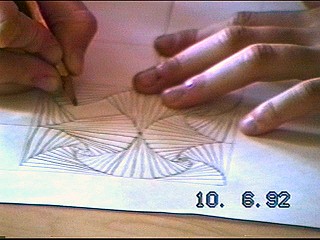 |
Lessons in this course:
| 1 | Snowflake Curve | 5 | Patterns 2 | 9 | Jacob's Ladder |
| 2 | Labyrinth | 6 | Celtic Knots | 10 | Towers |
| 3 | Mazes | 7 | Tangrams | ||
| 4 | Patterns | 8 | Magic Trick |
![]()
MEDIEVAL HISTORYThis course covers the Middle Ages, which is considered, for this class, to be from the time of Pope Gregory the Great until the Hundred Years' War and the Black Death (very roughly, the 6th through 14th century).The course will cover both religious and secular aspects of this period. The emphasis will be on the history of the Church in this period. The class is mostly in chronological order, except when there are events that cover a long period of time (such as the Spanish Reconquista, the Crusades, Feudalism). A map would be helpful, to locate some of the places discussed in the course. But no materials are required for this course. |
 |
Lessons in this course:
| 1 | Before the Middle Ages | 12 | Norman Conquest of England | 23 | Inquisition |
| 2 | Pope St. Gregory the Great | 13 | Pope Gregory VII | 24 | Great Interregnum |
| 3 | Islam | 14 | Crusades | 25 | Marco Polo & China |
| 4 | Pelayo and the Reconquista | 15 | Feudalism | 26 | St.Thomas Aquinas |
| 5 | Carolingians | 16 | Medieval Sciences | 27 | Council of Lyon |
| 6 | Charlemagne | 17 | Medieval Art | 28 | Avignon Papacy |
| 7 | Vikings | 18 | Medieval Music | 29 | Great Schism |
| 8 | Cluniac Reform | 19 | St. Bernard | 30 | Hundred Years' War |
| 9 | Otto & the Holy Roman Empire | 20 | King Henry II | 31 | Black Death |
| 10 | Conversion of the Barbarians | 21 | St. Francis and St. Dominic | 32 | After the Middle Ages |
| 11 | Greek Schism | 22 | King St. Louis IX |
![]()

This is a course on the Mass according to the Missal of 1962 (i.e. Tridentine Mass, Latin Mass, Indult Mass). It goes through each individual part of the Mass, describing and explaining what is going on along with a little history of most parts.
This course would be most useful to those who attend an indult Mass or a Mass at an FSSP parish.
It may also be interesting to kids who go to the Novus Ordo Mass but would be interested in learning the history of the Mass; some parts would be applicable to the Novus Ordo, but not many.
It is not necessary to know any Latin before studying this course, but it may be helpful. A 1962 (or earlier) missal is recommended but is not necessary.
Lessons in this course:
| 1 | Vesting Prayers | 12 | Chants between the Readings: Tract & Sequence | 23 | Breaking of the Bread |
| 2 | Some prayers before Mass | 13 | Gospel | 24 | Angus Dei |
| 3 | Prayers at the Foot of the Altar | 14 | Creed | 25 | Prayers before Communion |
| 4 | Confiteor | 15 | Offertory, Lavabo | 26 | Communion |
| 5 | Psalm 42 | 16 | 'Pray, Brethren' & Secret | 27 | Prayers of the Purifications |
| 6 | Introit | 17 | Preface | 28 | Communion & Post-Communion verses |
| 7 | Kyrie | 18 | Sanctus | 29 | 'Ite Missa Est' & Final Blessing |
| 8 | Gloria | 19 | Canon up to the Consecration | 30 | Last Gospel |
| 9 | 'The Lord be with you', Collect, & Amen | 20 | Canon to the Memorial of the Dead | 31 | Leonine prayers |
| 10 | Lessons (Epistle) | 21 | rest of the Canon | 32 | Some prayers after Mass |
| 11 | Chants between the Readings: Gradual & Alleluia | 22 | Our Father |
![]()
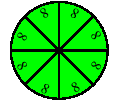 Sometimes the part of math that some homeschoolers have difficulty with is when it comes to working with fractions. This course covers just about everything that would be done with fractions in elementary school, in a simple, structured system.
Sometimes the part of math that some homeschoolers have difficulty with is when it comes to working with fractions. This course covers just about everything that would be done with fractions in elementary school, in a simple, structured system.Since this is only one aspect of math, families may want to use this to supplement another math course or along with other math lessons being done at the same time.
Some cardboard is recommended for the first lesson, otherwise no other materials are needed for this course.
Lessons in this course:
| 1 | Visual Fractions | 12 | Prime Factoring | 23 | Adding with Different Denominators |
| 2 | Adding with the Same Denominator | 13 | Lowest Terms by Prime Factors | 24 | Subtracting with Different Denominators |
| 3 | Subtracting with the Same Denominator | 14 | Converting Mixed Numbers to Improper Fractions | 25 | Comparison |
| 4 | Remaining Fractions | 15 | Converting Improper Fractions to Mixed Numbers | 26 | Decimals and Tenths |
| 5 | Multiplying Fractions | 16 | Multiplying Mixed Numbers | 27 | Decimals to Hundredths and Thousandths |
| 6 | Cancelling | 17 | Dividing Mixed Numbers | 28 | Changing Other Fractions to Decimals |
| 7 | Dividing Fractions | 18 | Adding Mixed Numbers | 29 | Changing Decimals to Fractions |
| 8 | Equivalent Fractions | 19 | Adding Mixed Numbers with Carry | 30 | Basic Decimal Equivalents |
| 9 | Lowest Terms by Division | 20 | Subtracting Mixed Numbers | 31 | Changing Fractions to Percents |
| 10 | Lowest Terms by Greatest Common Factor | 21 | Subtracting Mixed Numbers with Borrow | 32 | Using Percents |
| 11 | Prime Numbers | 22 | Lowest Common Multiple |
![]()
 This covers the geography of Africa and the islands of the Pacific (the countries not covered in the other 2 L.P.H. geography courses).
The countries are looked at from a Catholic point of view.
This covers the geography of Africa and the islands of the Pacific (the countries not covered in the other 2 L.P.H. geography courses).
The countries are looked at from a Catholic point of view. 
A world map is needed for this course. Maps are shown in the lessons of the countries, but you need a world map for a good understanding of the exact location of each country in Africa and the Pacific. It should be a recent world map (no more than a few years old).
Lessons in this course:
| 1 | Egypt, Libya | 12 | Rwanda, Uganda, Kenya | 23 | Kiribati, Palmyra Atoll, Howland Island, Baker Island |
| 2 | Tunisia, Algeria, Morocco | 13 | Tanzania, Burundi | 24 | Tuvalu, Tokelau, Wallis and Futuna Islands |
| 3 | Western Sahara, Mauritania, Mali, Burkina Faso | 14 | Mozambique, Malawi | 25 | Samoa, American Samoa, Tonga, Niue |
| 4 | Senegal, Gambia, Cape Verde, Guinea-Bissau | 15 | Madagascar, Comoros | 26 | Vanuatu, New Caledonia, Norfolk Island, Kermadec Island |
| 5 | Guinea, Sierra Leone, Liberia | 16 | Seychelles, Mauritius, Reunion, Mayotte | 27 | Fiji, French Polynesia, Cook Islands, Pitcairn Island |
| 6 | Côte d'Ivoire, Ghana, Togo, Benin | 17 | Zambia, Zimbabwe, Botswana | 28 | Western Australia |
| 7 | Niger, Nigeria | 18 | Angola, Cabinda, Namibia | 29 | Central Australia |
| 8 | Camaroon, Chad, Sudan, South Sudan | 19 | South Africa, Lesotho, Swaziland | 30 | Eastern Australia, Tasmania |
| 9 | Somali, Ethiopia, Eritrea, Djibouti | 20 | Northern Mariana Islands, Wake Island, Guam, Marshall Islands | 31 | New Zealand-North Island |
| 10 | Equatorial Guinea, São Tomé and Principe, Gabon | 21 | Palau, Micronesia, Nauru | 32 | New Zealand-South Island, Chatham Island |
| 11 | Central African Republic, Republic of the Congo, Democratic Republic of the Congo | 22 | Papua New Guinea, Solomon Islands |
![]()
 The L.P.H. Ancient History Course covers all the major civilizations from Adam & Eve up until the Birth of Christ.
The L.P.H. Ancient History Course covers all the major civilizations from Adam & Eve up until the Birth of Christ.
They are all presented from a Catholic perspective, with frequent Biblical references to events and civilizations which have had an impact on Salvation History.
There are maps and examples of the writings of ancient peoples. Ancient cultures, literature, art, religions and myths, and environments are considered.
There are also enjoyable activities included to enhance the learning of ancient civilizations.
A current world map is required for this course, as well as a Bible.
Lessons in this course:
| 1 | Prehistoric Man | 12 | China: Han Dynasty | 23 | Macedonia |
| 2 | Mesopotamia | 13 | Phoenicia & Carthage | 24 | Greek Myths |
| 3 | Sumer & Akkad | 14 | Hebrews | 25 | Celts |
| 4 | Early Egypt | 15 | North of Mesopotamia | 26 | Etruscans |
| 5 | Egypt: The New Kingdom | 16 | Lydia & Phrygia | 27 | Roman Monarchy & Republic |
| 6 | Late Egypt | 17 | Assyria | 28 | Roman Myths & Literature |
| 7 | Egyptian Mythology | 18 | Babylonia | 29 | Punic Wars |
| 8 | Minoan & Mycenaean Civilizations | 19 | Persia | 30 | Roman Empire |
| 9 | India | 20 | Early Greece | 31 | Augustus |
| 10 | China: Shang Dynasty | 21 | Athens | ||
| 11 | China: Jou & Chin Dynasties | 22 | Sparta |
![]()
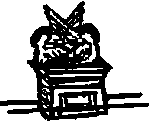
Protestants often have a more thorough knowledge of the Bible than Catholics do. It should not be that way.
The Bible is considered in this course to be just as accurate (if not more accurate) as any historical records which has ever been written. The course takes a very traditional view of the Bible, such as the accuracy of the story of Creation and the writing of all of St. Paul's Epistles by St. Paul himself.
The goal is to have some knowledge of the books of the Old and New Testaments of the Bible.
 This course requires a Catholic Bible. The course uses the chapter and verse numbering according to the Douay-Rheims or Confraternity version of the Bible.
This course requires a Catholic Bible. The course uses the chapter and verse numbering according to the Douay-Rheims or Confraternity version of the Bible.
The lessons usually use the newer (Hebrew-based) spellings of names, since they are closer to the original names and easier to pronounce, but alternate spellings are often included for students using older Bibles.
Lessons in this course:
| 1 | Creation | 12 | King David | 23 | Birth of Jesus |
| 2 | Noah | 13 | King Solomon and the Temple | 24 | Childhood of Jesus |
| 3 | Abraham | 14 | Division of Israel & Judah | 25 | Life of Jesus |
| 4 | Isaac & Jacob | 15 | Elijah & Elisha | 26 | Crucifixion & Resurrection |
| 5 | Joseph in Egypt | 16 | Destruction of Israel | 27 | The Gospels |
| 6 | Moses & the Exodus | 17 | Minor Prophets | 28 | Acts of the Apostles |
| 7 | 10 Commandments | 18 | Kings of Judah, & Isaiah | 29 | The Early Church |
| 8 | Joshua & the Fall of Jericho | 19 | Fall of Judah, & Jeremiah | 30 | St. Paul |
| 9 | Judges, & Ruth | 20 | Ezekiel & Daniel | 31 | Letters of St. Paul |
| 10 | Samuel & King Saul | 21 | Return to Judah & Maccabees | ||
| 11 | David & Goliath | 22 | Roman Rule in Christ's Time |
![]()
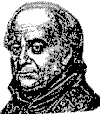 This is a survey of American History. It begins with the prehistoric American Indians, and ends with the 1990s.
This is a survey of American History. It begins with the prehistoric American Indians, and ends with the 1990s.
The course teaches the history of the American government, the history of the Catholic Church in America, and other important events in American history, up to the end of the 20th century.
It takes a strictly Catholic point of view: e.g. The true heroes of American history are the American saints rather than Freemasons even if they were important Founding Fathers of the U.S., and what is good for the Catholic Church is good for the country and what is harmful to the Catholic Church is harmful to the country.
No other materials are required, though a map of the United States would be very helpful for seeing where various events took place.
Lessons in this course:
| 1 | American Indians | 12 | Constitution | 23 | Causes of World War I |
| 2 | Pre-Columbian visits to America | 13 | The Amendments | 24 | World War I |
| 3 | Christopher Columbus | 14 | Diocese of Baltimore | 25 | Boom & Depression |
| 4 | Spanish Explorers, Settlers, & Missionaries | 15 | Louisiana Purchase | 26 | Franklin Roosevelt |
| 5 | French in America | 16 | War of 1812 | 27 | Hitler |
| 6 | New England | 17 | Between the War of 1812 & the Civil War | 28 | World War II |
| 7 | William Penn | 18 | The Coming of the Civil War | 29 | Cold War |
| 8 | Other English Colonies | 19 | Civil War | 30 | The 1960s |
| 9 | Founding Fathers | 20 | After Lincoln | 31 | The 1970s & 80s |
| 10 | Reasons for the American Revolution | 21 | 19th Century | 32 | The 1980s & 90s |
| 11 | Revolutionary War | 22 | Beginning of the 20th Century |
![]()
The course will begin with the pre-Socratic Greek philosophers' attempts to understand the physical world, and will continue through the work of the Alchemists, the beginnings of modern Science, and some current scientific theories. It ends at the end of the 20th century.

Lessons in this course:
| 1 | Before the Greeks | 12 | The Crime of Galileo | 23 | More 1800s |
| 2 | Early Greeks | 13 | Middle 1600s | 24 | Darwin's Theory of Evolution |
| 3 | Aristotle & Late Greece | 14 | Later 1600s in Germany & Holland | 25 | Later 1800s |
| 4 | After the Ancient Greeks | 15 | Later 1600s in England | 26 | Later 1800s Controversial |
| 5 | After Rome | 16 | Isaac Newton | 27 | Early 1900s: Geology & Physics |
| 6 | Alchemy | 17 | Into the 1700s | 28 | Albert Einstein |
| 7 | Middle Ages to Renaissance | 18 | Nollet & Franklin | 29 | Atom Bomb |
| 8 | Beginning of the Renaissance | 19 | Chemistry | 30 | Cold War |
| 9 | Rest of the 16th Century | 20 | Biology in the 1700s | 31 | Home Computers |
| 10 | Magnetism & Electricity | 21 | Physics in the 1700s | 32 | Cold Fusion |
| 11 | Galileo & Kepler | 22 | The 1800s |
![]()
Each lesson takes 2 weeks. The first week is the informational part of the lesson, along with a quiz like the other LPH classes. The second week is the activity or project for that lesson. They may involve acting something out or constructing something out of cardboard, toothpicks, Styrofoam balls, or other materials.
The first week, all the materials that will be needed for the following project will be listed, giving at least one full week to get the supplies if they can't already be found around the house. Common materials will be needed, such as cardboard, mirrors, magnifying glass, protractor, flashlight, string, toothpicks, clay, Styrofoam balls, screwdrivers, etc. -- no special scientific equipment is necessary.
Lessons in this course:
| 1 | Light | 12 | VCR | 23 | Molecules |
| 2 | Light | 13 | Remote Control | 24 | Molecules |
| 3 | Mirrors | 14 | Remote Control | 25 | Power Sources |
| 4 | Mirrors | 15 | Gravity & Balance | 26 | Power Sources |
| 5 | Sound | 16 | Gravity & Balance | 27 | Plate Tectonics |
| 6 | Sound | 17 | Rotation of the Earth & Seasons | 28 | Plate Tectonics |
| 7 | Frequency & Echoes | 18 | Rotation of the Earth & Seasons | 29 | Mountains & Earthquakes |
| 8 | Frequency & Echoes | 19 | Solar System & The Sky | 30 | Mountains & Earthquakes |
| 9 | Television | 20 | Solar System & The Sky | 31 | Glaciers & Erosion |
| 10 | Television | 21 | Atoms & Elements | 32 | Glaciers & Erosion |
| 11 | VCR | 22 | Atoms & Elements |
![]()
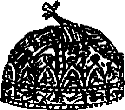 This covers the geography of Europe and Asia. Every country of Europe & Asia as of 2000 is covered, including all the countries of the former Soviet Union, such a Azerbaijan, Tajikistan and Kyrgyzstan.
This covers the geography of Europe and Asia. Every country of Europe & Asia as of 2000 is covered, including all the countries of the former Soviet Union, such a Azerbaijan, Tajikistan and Kyrgyzstan.A world map is needed for this course. Maps are shown in the lessons of the countries, but you need a world map for a good understanding of the exact location of each country in Europe or Asia. It must be a fairly recent world map (i.e. no earlier than the mid-1990s).
Lessons in this course:
| 1 | Iceland | 12 | Netherlands, Belgium, Luxembourg | 23 | Arabian Peninsula |
| 2 | Ireland | 13 | Denmark, Sweden, Norway | 24 | Lebanon, Jordan, & Syria |
| 3 | England | 14 | Finland & Lapland | 25 | Iran & Iraq |
| 4 | Scotland & Wales | 15 | Lithuania, Latvia, Estonia | 26 | India & Indic Countries |
| 5 | Portugal | 16 | 8 Western Slavic Countries | 27 | Southwest Asia |
| 6 | Spain | 17 | 3 Eastern Slavic Countries | 28 | Mongolia & China |
| 7 | France, Monaco, Andorra | 18 | Hungary & Transylvania | 29 | Eastern Asia (Japan & N.&S.Korea) |
| 8 | Italy | 19 | Romania, Moldova, Bulgaria, Albania | 30 | Indochina Peninsula |
| 9 | Vatican City, Malta, San Marino | 20 | Greece | 31 | Malaysia, Singapore, Brunei |
| 10 | Switzerland, Liechtenstein, Austria | 21 | Turkey & Cyprus | 32 | Indonesia, Papua New Guinea, Philippines |
| 11 | Germany | 22 | Israel & Palestine |
![]()

A map of North and South America is required.
 |
 |
Lessons in this course:
| 1 | Canada, Eastern Canada | 12 | Turks & Caicos Islands | 23 | Honduras & Nicaragua |
| 2 | Central Canada | 13 | Jamaica | 24 | Costa Rica & Panama |
| 3 | Western Canada | 14 | Puerto Rico | 25 | Colombia & Venezuela |
| 4 | Northern Canada | 15 | Virgin Islands | 26 | Guyana, Suriname, & French Guiana |
| 5 | United States: Northeast | 16 | Around St. Martin | 27 | Ecuador & Peru |
| 6 | United States: South | 17 | St.Kitts&Nevis, Antigua&Barbuda, Montserrat | 28 | Brazil |
| 7 | United States: Middle | 18 | Guadeloupe, Dominica, Martinique, St.Lucia | 29 | Bolivia |
| 8 | United States: West | 19 | Barbados,St.Vincent&The Grenadines,Grenada | 30 | Paraguay & Uruguay |
| 9 | Mexico | 20 | Trinidad & Tobago | 31 | Argentina |
| 10 | Cuba | 21 | S. Netherland Antilles, Aruba, & Bermuda | 32 | Chile |
| 11 | The Bahamas | 22 | Guatemala, Belize, El Salvador |
![]()
 The L.P.H. Latin course is designed for elementary-school-age children who have already learned the most basic fundamentals of English grammar, i.e. what a noun is, what a verb is, what an adjective is, what a sentence is. If the student knows that much grammar, the course will be valuable for him.
The L.P.H. Latin course is designed for elementary-school-age children who have already learned the most basic fundamentals of English grammar, i.e. what a noun is, what a verb is, what an adjective is, what a sentence is. If the student knows that much grammar, the course will be valuable for him.
This course may be used by children and parents who have no previous knowledge of any foreign language.
Emphasis is given to the Latin Mass, the Vulgate, and Latin prayers. By the end of the year, the child should be able to follow many of the prayers of the Latin Mass.
Each lesson includes a translation exercise, with authentic examples of Church Latin: traditional Catholic prayers, excerpts from the Vulgate and from the Tridentine Mass, and other Catholic samples.
The course is also useful for improving vocabulary and grammar.
A notebook is required, where new vocabulary words can be written each week for review and study throughout the course. (A good deal of study is required for this course.)
Index cards to use as flashcards to help in studying the vocabulary words is also a very good idea.
There are also pages which may be printed out, or copied down into the notebook.
Lessons in this course:
| 1 | Pronunciation | 12 | Present Tense Singular Verbs | 23 | Dative Case Singular |
| 2 | Gender | 13 | Present Tense Plural Verbs | 24 | Dative Case Plural |
| 3 | Word Order | 14 | Irregular verbs: velle & nolle | 25 | Dative case pronouns |
| 4 | Agreement | 15 | Adverbs | 26 | Future tense |
| 5 | Plurals | 16 | Imperatives | 27 | Ablative Case Singular |
| 6 | Number Agreement | 17 | Accusative Case | 28 | Ablative Case Plural & Vocative Case |
| 7 | Singular Pronouns & esse | 18 | Accusative case plural | 29 | Ablative case prepositions |
| 8 | Plural Pronouns & esse | 19 | Acc., Gen., Reflexive, Intensive pronouns | 30 | Prefixes & Suffixes |
| 9 | Genitive Case | 20 | Accusative case prepositions | 31 | Passive Voice |
| 10 | Genitive Plural | 21 | Past tense singular | 32 | Subjunctive Mood |
| 11 | Numbers | 22 | Past tense plural |
![]()
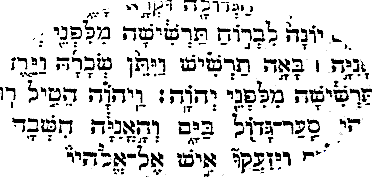
The alphabet courses teach how to make and pronounce the letters, and teach many words in those languages.
It is very strongly recommended that a student interested in the Greek grammar course take the Greek alphabet course first.
Lessons in the Greek Alphabet course:
| 1 | alpha, beta, gamma | 5 | xi, omicron, pi | 9 | phi, chi |
| 2 | delta, epsilon, zeta, eta | 6 | rho, sigma | 10 | psi, omega |
| 3 | theta, iota | 7 | tau, upsilon | 10 | names |
| 4 | kappa, lambda, mu, nu |
Lessons in the Hebrew Alphabet course:
| 1 | aleph, beth | 5 | yodh, lamedh, kaph, mem | 9 | qoph, resh |
| 2 | gimel, daleth | 6 | nun, samekh, ayin | 10 | sin, shin, tau |
| 3 | he, waw, zayin | 7 | tsadhe, pe | 10 | names |
| 4 | heth, teth |

Regarding the Greek Grammar course:
Grammatical forms are slowly introduced. Simple sentences are also introduced. There will also be vocabulary lists to study each week. There are audio files giving the proper pronunciations in each lesson.
The Greek grammar class is a bit more difficult than most of the other LPH courses.
The goal will be, by the end of the year, to be able to read and fully understand some selected verses from the Bible.
A notebook is required for the lessons.
Lessons in the Greek Grammar course:
| 1 | Gender | 12 | Genitive Case Plural | 23 | Imperative |
| 2 | Plurals (oi) | 13 | Genitive Case & Prepositions | 24 | Participles |
| 3 | Plurals (ai) | 14 | Dative Case Singular | 25 | Passive Voice |
| 4 | Plurals (a) | 15 | Dative Case Plural | 26 | Comparisons |
| 5 | Plurals (es) | 16 | Vocative Case | 27 | Subjunctive |
| 6 | Singular Verbs | 17 | Numbers | 28 | Optative |
| 7 | Plural Verbs | 18 | To Be | 29 | Perfect Tense |
| 8 | Accusative Case Singular | 19 | MI Verbs | 30 | John 6 |
| 9 | Accusative Case Plural | 20 | Second Aorist | 31 | Our Father |
| 10 | First Aorist Tense | 21 | Relatives & Demonstratives | 32 | Verses |
| 11 | Genitive Case Singular | 22 | Imperfect & Future Tense |
![]()
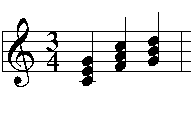
It is recommended (but not required) that the student be able to play, by reading notes, some instrument which can play individual notes and chords (such as a piano), to be able to try out what is being learned in the lessons. If a person can play the notes in the picture above, that is all the musical skill that would be necessary.
Students taking the class should already know what letters the lines and spaces of the staff are (Every Good Boy Does Fine).
This is not an easy class. It requires quite a bit of study.
Lessons in this course:
| 1 | Music Terms | 12 | Note Values | 23 | Minor Scales |
| 2 | Scales | 13 | Major Chords #2 | 24 | Minor Keys |
| 3 | major keys | 14 | Major Chords #3 | 25 | Minor Key Chords |
| 4 | Time Signatures | 15 | Minor Chords | 26 | Minor Key Chords #2 |
| 5 | Intervals | 16 | Minor Chords #2 | 27 | More About Regular Rhythm |
| 6 | Major & Perfect Intervals | 17 | Diminished Chords | 28 | Irregular Meters |
| 7 | Minor Intervals | 18 | Augmented Chords | 29 | Other Scales |
| 8 | Augmented Intervals | 19 | Cadence | 30 | Modes |
| 9 | Diminished Intervals | 20 | Inversion | 31 | Chant Notation |
| 10 | Review | 21 | 7th Chords | ||
| 11 | Major Chords | 22 | 7th Chord Inversions |
Some of the lessons include composing music.
You can listen to the Musical Compositions that have been written as part of this music class here.
![]()
This class is very different from all the other classes.
There are no quizzes, and usually no extensions are given (all assignments must be completed within the time allowed: a week). No final grade is given (since there are no quiz grades to average).
The course is in 3 parts:
I recommend that parents (or an older brother or sister) should go over the spelling and grammar before each assignment is sent!
No student may join the class after the first week's assignment has ended.
The writing lessons are structured: if more than a few assignments are missed during the year, it may become impossible to catch up, and the rest of the writing assignments will not be able to be done.
(For people who took this class last year: The structure of the course will be the same as it before, but the topic will be different.)
You can read the Stories here that were written and completed by the kids who took the first Creative Writing class, during the 1999-2000 school year. Topic: "An Unknown Country"
You can read the Stories here from the 2000-2001 school year. Topic: "Once upon a Time"
You can read the Stories here from the 2001-2002 school year. Topic: "Strange Creatures"
You can read the Stories here from the 2003-2004 school year. Topic: "Invention"
You can read the Stories here from the 2004-2005 school year. Topic: "Ability"
You can read the Stories here from the 2005-2006 school year. Topic: "A Unique Pet"
You can read the Stories here from the 2006-2007 school year. Topic: "Home Sweet Home"
You can read the Stories here from the 2007-2008 school year. Topic: "A Special Book"
You can read the Stories here from the 2007-2008 school year. Topic: "An Important Map"
You can read the Stories here from the 2009-2010 school year. Topic: "The Odd Neighbor"
You can read the Stories here from the 2010-2011 school year. Topic: "Long Journey"
You can read the Stories here from this past year (2011-2012). Topic: "Secret Passage"
Enrollment is limited for this class, and is now full.
Back to the L.P.H. On-Line Courses page